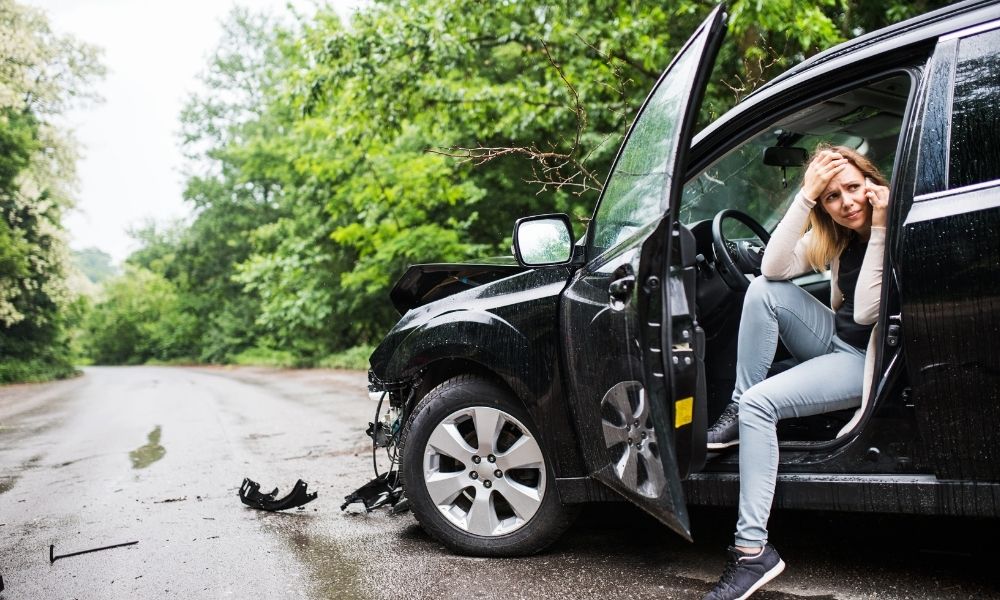Accidents are an unfortunate reality for car owners. When they happen, they often result in a variety of damages to your vehicle. Understanding the common types of car damage after an accident and how they are fixed can help you navigate the repair process more smoothly. At Cyclone Collision Center, we specialize in restoring your vehicle to its pre-accident condition with expert care and precision. In this article, we’ll explore the most frequent types of car damage and the methods used to repair them.
1. Dents and Dings
Dents and dings are among the most common types of damage resulting from accidents, especially minor collisions. They can occur on any part of the vehicle but are most commonly found on the doors, fenders, and bumpers.
Fixing Dents and Dings:
- Paintless Dent Repair (PDR): This technique is used for minor dents where the paint is still intact. Technicians use specialized tools to gently massage the dent out from the inside, restoring the panel to its original shape.
- Traditional Dent Repair: For larger or more severe dents, traditional dent repair may be necessary. This involves filling the dent with a body filler, sanding it smooth, and repainting the area to match the rest of the vehicle.
2. Scratches and Paint Damage
Scratches can range from light surface marks to deep gouges that penetrate the paint layers. Paint damage not only affects the vehicle’s appearance but can also lead to rust and corrosion if left untreated.
Fixing Scratches and Paint Damage:
- Buffing and Polishing: Light scratches can often be removed through buffing and polishing, which involves using a fine abrasive to smooth out the surface and restore the shine.
- Touch-Up Paint: For small, deep scratches, touch-up paint can be applied to fill in the damaged area and prevent rust.
- Repainting: Extensive paint damage requires repainting. This process involves sanding down the damaged area, applying primer, paint, and clear coat, and then blending it with the surrounding area to ensure a seamless finish.
3. Bumper Damage
Bumpers are designed to absorb impact, making them one of the most commonly damaged parts of a vehicle in an accident. Damage can range from minor scuffs and scratches to significant cracks and deformation.
Fixing Bumper Damage:
- Plastic Welding: For minor cracks, plastic welding can be used to fuse the broken pieces together, followed by sanding and repainting.
- Replacement: Severe damage often requires bumper replacement. The damaged bumper is removed, and a new one is installed and painted to match the vehicle.
4. Frame Damage
Frame damage is one of the most serious types of car damage. It occurs when the structural integrity of the vehicle is compromised, which can affect its safety and performance.
Fixing Frame Damage:
- Frame Straightening: Using specialized equipment, technicians can realign the frame to its original specifications. This involves securing the vehicle to a frame machine and using hydraulic tools to pull the frame back into shape.
- Sectional Repairs: In cases where certain sections of the frame are damaged, those sections can be cut out and replaced with new metal. This ensures the structural integrity of the vehicle is restored.
5. Windshield and Glass Damage
Windshields and other glass components can easily crack or shatter during an accident. Even minor cracks can compromise the structural integrity of the glass and obstruct the driver’s view.
Fixing Windshield and Glass Damage:
- Chip Repair: Small chips and cracks can often be repaired by injecting a special resin into the damaged area, which is then cured and polished.
- Replacement: For larger cracks or shattered glass, replacement is necessary. The damaged glass is removed, and a new piece is installed using strong adhesives to ensure a secure fit.
6. Mechanical Damage
Accidents can also cause mechanical damage, affecting components like the engine, transmission, suspension, and brakes. This type of damage can impact the vehicle’s performance and safety.
Fixing Mechanical Damage:
- Diagnostics: Technicians use advanced diagnostic tools to identify any mechanical issues caused by the accident.
- Repairs and Replacement: Depending on the extent of the damage, parts may be repaired or replaced. This can include anything from fixing a bent axle to replacing a damaged radiator.
Conclusion
Car accidents can result in a wide range of damages, from minor dents to significant frame and mechanical issues. Understanding these common types of car damage and how they are fixed can help you make informed decisions about your vehicle’s repairs. At Cyclone Collision Center, we are dedicated to providing top-quality repair services to get you back on the road safely and quickly. Our skilled technicians use the latest techniques and equipment to restore your vehicle to its pre-accident condition, ensuring peace of mind and satisfaction. Trust Cyclone Collision Center for all your collision repair needs.
